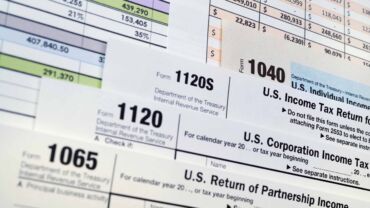Rev. Proc. 2018-57 (Nov. 15, 2018); IRS News Release IR-2018-222 (Nov. 15, 2018)
The IRS has released the 2019 cost-of-living adjustments (COLAs) for a wide variety of tax-related limits, including limits relating to health FSAs, qualified transportation fringe benefits, qualified small employer health reimbursement arrangements (QSEHRAs), adoption assistance, DCAPs, the small business health care tax credit, the premium tax credit, and Archer MSAs.
-
Health FSAs. For 2019, the dollar limit on employee salary reduction contributions to health FSAs will be $2,700 (up from $2,650).
-
Qualified Transportation Fringe Benefits. For 2019, the monthly limit on the amount that may be excluded from an employee’s income for qualified parking benefits will be $265 (up from $260). The combined monthly limit for transit passes and vanpooling expenses for 2019 will be $265 (up from $260).
-
QSEHRAs. For 2019, the maximum amount of payments and reimbursements under a QSEHRA will be $5,150 for self-only coverage and $10,450 for family coverage (up from $5,050 and $10,250, respectively).
-
Adoption Assistance Exclusion and Adoption Credit. The maximum amount that may be excluded from an employee’s gross income under an employer-provided adoption assistance program for the adoption of a child will be $14,080 for 2019 (up from $13,810). In addition, the maximum adoption credit allowed to an individual for the adoption of a child will be $14,080 for 2019 (up from $13,810). Both the exclusion and the credit will begin to be phased out for individuals with modified adjusted gross incomes greater than $211,160 and will be entirely phased out for individuals with modified adjusted gross incomes of $251,160 or more.
-
DCAPs. While the $5,000/$2,500 DCAP limit has not changed (it is a non-indexed limit), there are adjustments to some of the general tax limits that are relevant to the federal income tax savings under a DCAP. These include the 2019 tax rate tables, earned income credit amounts, and standard deduction amounts. The child tax credit limits are also relevant when calculating the federal income tax savings from claiming the dependent care tax credit (DCTC) versus participating in a DCAP.
-
Small Business Health Care Tax Credit. For 2019, the average annual wage level at which the tax credit begins to phase out for eligible small employers will be $27,100 (up from $26,600). The maximum average annual wages to qualify for the credit as an “eligible small employer” for 2019 will be twice this amount, i.e., $54,200 (up from $53,200).
-
Premium Tax Credit. For taxable years beginning in 2019, the following limitations on the tax for excess advance credit payments will apply: For unmarried individuals (other than surviving spouses and heads of household), $300 for household incomes less than 200% of the federal poverty line (FPL); $800 for household incomes at least 200% but less than 300% of FPL; and $1,325 for household incomes at least 300% but less than 400% of FPL. For all other taxpayers, $600 for household incomes less than 200% of FPL; $1,600 for household incomes at least 200% but less than 300% of FPL; and $2,650 for household incomes at least 300% but less than 400% of FPL. This tax is imposed if a taxpayer’s advance premium tax credit payments for health insurance purchased through an Exchange for a year exceed the allowed credit. (For 2019 indexing adjustments used to determine an individual’s premium tax credit and whether an individual is eligible for affordable employer-sponsored minimum essential coverage, see our Checkpoint article).
-
Archer MSAs. For Archer MSA-compatible high-deductible health coverage, the annual deductible for self-only coverage must not be less than $2,350 (up from $2,300) or more than $3,500 (up from $3,450), with an out-of-pocket maximum of $4,650 (up from $4,550). For family coverage, the annual deductible must not be less than $4,650 (up from $4,550) or more than $7,000 (up from $6,850), with an out-of-pocket maximum of $8,550 (up from $8,400).
-
Requirement to Maintain Minimum Essential Coverage. Reflecting recent legislative changes (see our Checkpoint article), the dollar amount used to determine the penalty for not maintaining minimum essential coverage is $0 (down from $695 for 2018).
Other 2019 limits with benefit implications include the thresholds for determining who is a “control employee” under the commuting valuation rule (announced in IRS guidance on other limits—see our Checkpoint article), and the limits on the long-term care premiums that will be considered medical care under Code § 213(d) (ranging from $420 to $5,270, depending on the age of the covered individual).
EBIA Comment: Sponsors and administrators of benefits with limits that are changing will need to determine whether their plans automatically apply the latest limits or must be amended (if desired) to recognize the changes. Any changes in limits should also be communicated to employees. Employers that closed their 2019 open enrollment periods before the limits were announced should decide whether to allow employees to revise their health FSA elections before the 2019 plan year begins. Note that the Archer MSA pilot program expired at the end of 2007, which means that no new Archer MSAs can be established after that date. Many who previously had Archer MSAs have switched to HSAs, which are generally more favorable. (For the 2019 COLAs for HSAs, see our Checkpoint article.) For more information, see EBIA’s Cafeteria Plans manual at Sections XIX.F (“Limitation on Health FSA Salary Reductions”) and XXIII.C (“DCAP Participation vs. Claiming the Dependent Care Tax Credit”); EBIA’s Fringe Benefits manual at Sections III (“Qualified Adoption Assistance Programs”) and XX (“Qualified Transportation Plans”); EBIA’s Consumer-Driven Health Care manual at Sections XXVII.C (“QSEHRA Reimbursements, Benefit Limits, and Funding”) and XXXI (“Archer MSAs”); and EBIA’s Health Care Reform manual at Sections XXVI (“Small Business Health Care Tax Credit”), XXIX.C (“Calculating the Penalty (the ‘Shared Responsibility Payment’ for Individuals”), and XXIX.F (“Premium Tax Credits for Lower-Income Individuals”).
Contributing Editors: EBIA Staff.











